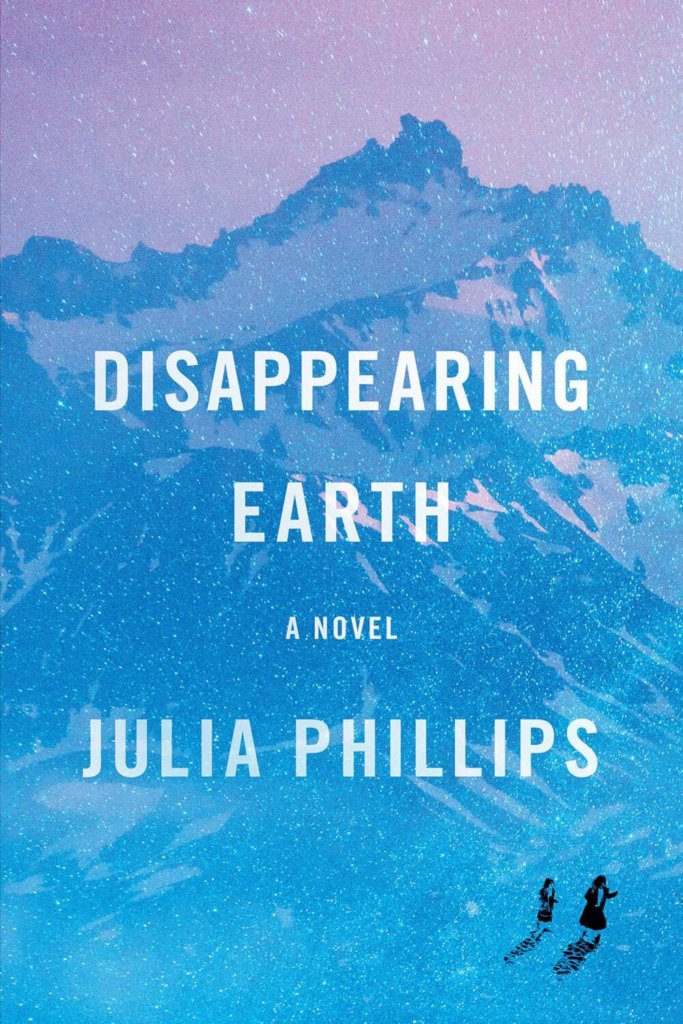The delights, and dangers, of summer reading
For the past few weeks, having had (for too many of these beautiful days) a series of headaches, it occurred to me that I might try PT. I know a PT person who is very good—I’d been to her before for other issues—and someone had suggested to me that she might be able to help with my headaches, so I made an appointment and went. On the day, she got to work, massaging my head, neck and upper back. About 20 minutes into the session, she asked me if I spend a lot of time with my head at a certain angle, which she then demonstrated, chin cocked slightly down. “Well, I drive a lot,” I said, which is certainly true. I paused, considering, then added, “…And I read a lot.” She then explained that it was possible that holding my head in that (chin cocked down) position for too long a time without a rest or a stretch might be contributing to my headaches. “Oh my God,” I said to her. “Are you telling me I have a reading injury?!”
And so, dear Reader, please beware. Though you might assume that reading is one of the safest pastimes on planet Earth, indeed it is not. It may, as my case illustrates, cause injury. Then I got to thinking…am I being irresponsible in recommending book after book without warning of the possible negative consequences of prolonged reading? And are there other risks besides stiff necks and headaches that readers should know about? After giving the matter some thought, I have come to the conclusion that there are. Sunburn, for instance.
Have you ever laid out on a deck chair in the sun with a good book and totally lost track of the time and/or the awareness that you are burning slowly to a hot crisp in the sun’s luxuriant rays? Well, I have. And sunburn is painful. It is also, happily, with a little planning, a little tending, avoidable. Sunscreen, a hat and, perhaps ideally, a nice hammock strung beneath two leafy maple trees are recommended.
Besides sunburn, there is yet another possible danger related to reading, and that is falling. “How could one possibly fall when reading?” you ask. Well, I would urge you to please think about this for a moment. Have you ever been sitting in a chair reading a very engrossing book, and without your being aware, one of your legs has fallen asleep? And then, when you stand up to grab yourself another cookie, or an iced tea, or let the dog in, or out, or answer the door, or the phone, your leg, now utterly numb, gives out beneath you? It can happen. It can. Consider yourself warned.
Moving on…I have been reading a lot these summer days, and I have lots of recommendations.
 One blockbuster you have probably heard of by now is the Pulitzer Prize-winning “eco epic,” The Overstory, by Richard Powers. Its plot is complicated and braids a number of (at first seemingly disconnected) strands of lives, journeys and storylines into one. Bill McKibben called the book “a kind of breakthrough in the ways we think about and understand the world around us, at a moment when that is desperately needed.” I agree and will tell you that, after you read this book, you may never see trees the same way again.
One blockbuster you have probably heard of by now is the Pulitzer Prize-winning “eco epic,” The Overstory, by Richard Powers. Its plot is complicated and braids a number of (at first seemingly disconnected) strands of lives, journeys and storylines into one. Bill McKibben called the book “a kind of breakthrough in the ways we think about and understand the world around us, at a moment when that is desperately needed.” I agree and will tell you that, after you read this book, you may never see trees the same way again.
Did you know that trees that have fallen prey to insect invasion pump out insecticides to save their lives? And that trees growing “a little way off, untouched by the invading swarms, ramp up their own defenses when their neighbor is attacked”? “Something alerts them,” explains one of the characters in Powers’ novel. “They get wind of the disaster, and they prepare…The wounded trees send out alarms that other trees smell…They’re linked together in an airborne network, sharing an immune system across acres of woodland. These brainless, stationary trunks are protecting each other.”
Trees are important characters in this book: living, communicating, ancient, and wise, precious, resilient beings that may well outlive us in the end. Trees live in community, with each other, with us and with other species. As my friend’s car bumper sticker says, “We all breathe the same air.” Which might sound obvious, but we humans seem to lose sight of this simple, profound fact. And while it is magical and illuminating to see trees in a new light, and to become more conscious of what or who they are, there is, of course, the painful tragedy of what we humans are doing to them and to the planet. The clear-cutting. The deforestation. We are not respectful. We are not reverent. Not enough. Not yet. Not as a species.
This book is inspiring and horrifying, fascinating and transforming. It is a long story that helps bring into consciousness and vivid, sometimes hair-raising color the most important issues of our time: biodiversity collapse and climate change. Really, really good. Don’t miss it.
 On a much, much lighter and less arboreal note, I have a couple of delightful summer reads to recommend: Mrs. Everything (Jennifer Weiner) and Summer of ’69 (Elin Hilderbrand). Mrs. Everything is actually the least “lite” of Weiner’s novels. It begins with a short scene that takes place in a movie theater in 2015 and then goes back in time to the 50s, from whence it walks us back up to the present, through the era of Vietnam and Woodstock, Jell-O and the Stonewall riots. The main characters are two sisters who grow up in 1950s Detroit. One is a tomboy, a rebel, a lover of books, a budding activist; the other is feminine, pretty, a dancer and more of a traditionalist. The way their lives turn out reminds me of the old Yiddish proverb, “We plan, God laughs.” I always enjoy Jennifer Weiner’s books, and I really liked this one. A good one to read by the pool, with a hat and sunscreen, of course, along with a tall glass of lemonade or water. (I forgot to mention the dangers of dehydration; please add that to the list.)
On a much, much lighter and less arboreal note, I have a couple of delightful summer reads to recommend: Mrs. Everything (Jennifer Weiner) and Summer of ’69 (Elin Hilderbrand). Mrs. Everything is actually the least “lite” of Weiner’s novels. It begins with a short scene that takes place in a movie theater in 2015 and then goes back in time to the 50s, from whence it walks us back up to the present, through the era of Vietnam and Woodstock, Jell-O and the Stonewall riots. The main characters are two sisters who grow up in 1950s Detroit. One is a tomboy, a rebel, a lover of books, a budding activist; the other is feminine, pretty, a dancer and more of a traditionalist. The way their lives turn out reminds me of the old Yiddish proverb, “We plan, God laughs.” I always enjoy Jennifer Weiner’s books, and I really liked this one. A good one to read by the pool, with a hat and sunscreen, of course, along with a tall glass of lemonade or water. (I forgot to mention the dangers of dehydration; please add that to the list.)
 Summer of ’69 is another delightful, intoxicating romp by Elin Hilderbrand that takes place on (you guessed it) Nantucket. Ideal, ideal beach read—I can’t think of a better. As Susannah Cahalan wrote in the New York Post: “Hilderbrand is the queen of the summer. Rich people behaving badly—perfect poolside.” This book also takes us back to the Vietnam era, and in this case the Vietnam War plays a rather significant background role as beloved brother (and son, and grandson) Tiger is an infantry soldier there, and everyone is worried about him most of the time. Besides Tiger, we have Blair, his older sister, who is heavily and miserably pregnant with twins, living in Boston, married to Angus, an attractive nerd, whose brother Joey loved Blair first, which causes some not insignificant plot ripples….and then we have 13-year-old Jessie, who is spending the summer on the island, in an old house with lots of antiques, with her grandmother, Exalta (what a name, eh?) and her mother, both of whom are keeping different secrets from the world; and Jessie likes Luke, but that’s…well, complicated—and then there is Kirby, sister of Tiger and Jessie, the middle child, who is working on Martha’s Vineyard at a hotel where Ted Kennedy is residing the weekend he drives his car off the bridge at Chappaquiddick…and then Kirby gets involved with Darren, who is perfect, and also happens to be black, which (because it is ‘69) is problematic…oh, and a man lands and walks on the moon somewhere while all this other stuff is going on…and all in all, there is lots of drama and a luscious, beachy, islandy, romantic, breezy feeling running through everything that I just find so utterly and blissfully transporting. I can’t get enough of Hilderbrand’s Nantucket novels (of which there are almost two dozen, at this point. Maybe next summer I will reread them all…)
Summer of ’69 is another delightful, intoxicating romp by Elin Hilderbrand that takes place on (you guessed it) Nantucket. Ideal, ideal beach read—I can’t think of a better. As Susannah Cahalan wrote in the New York Post: “Hilderbrand is the queen of the summer. Rich people behaving badly—perfect poolside.” This book also takes us back to the Vietnam era, and in this case the Vietnam War plays a rather significant background role as beloved brother (and son, and grandson) Tiger is an infantry soldier there, and everyone is worried about him most of the time. Besides Tiger, we have Blair, his older sister, who is heavily and miserably pregnant with twins, living in Boston, married to Angus, an attractive nerd, whose brother Joey loved Blair first, which causes some not insignificant plot ripples….and then we have 13-year-old Jessie, who is spending the summer on the island, in an old house with lots of antiques, with her grandmother, Exalta (what a name, eh?) and her mother, both of whom are keeping different secrets from the world; and Jessie likes Luke, but that’s…well, complicated—and then there is Kirby, sister of Tiger and Jessie, the middle child, who is working on Martha’s Vineyard at a hotel where Ted Kennedy is residing the weekend he drives his car off the bridge at Chappaquiddick…and then Kirby gets involved with Darren, who is perfect, and also happens to be black, which (because it is ‘69) is problematic…oh, and a man lands and walks on the moon somewhere while all this other stuff is going on…and all in all, there is lots of drama and a luscious, beachy, islandy, romantic, breezy feeling running through everything that I just find so utterly and blissfully transporting. I can’t get enough of Hilderbrand’s Nantucket novels (of which there are almost two dozen, at this point. Maybe next summer I will reread them all…)
 I also recommend two novels by Sally Rooney: Normal People and Conversations with Friends. I read Normal People first, though it is the later of the two, and found it haunting and excellent, a page-turner. It follows an unlikely friendship (or maybe it’s an unlikely romance) between Connell and Marianne, two very, very different types of human beings with very different backgrounds and sensibilities who somehow keep getting pulled back into relationship with each other.
I also recommend two novels by Sally Rooney: Normal People and Conversations with Friends. I read Normal People first, though it is the later of the two, and found it haunting and excellent, a page-turner. It follows an unlikely friendship (or maybe it’s an unlikely romance) between Connell and Marianne, two very, very different types of human beings with very different backgrounds and sensibilities who somehow keep getting pulled back into relationship with each other.
Rooney’s writing is unusually insightful and intriguing. Here is a sample: “She sits at her dressing table looking at her face in the mirror. Her face lacks definition around the cheeks and jaw. It’s a face like a piece of technology, and her two eyes are cursors blinking. Or it’s reminiscent of the moon reflected in something, wobbly and oblique. It expresses everything all at once, which is the same as expressing nothing. To wear makeup for this occasion would be, she concludes, embarrassing. Without breaking eye contact with herself, she dips her finger in an open pot of clear lip balm and applies it.” I could not put this book down. Brilliant writing.
Which is also the case with Conversations with Friends, the plot of which is emotionally tangled, textured and rich. The characters are, again, unusual, mesmerizing. Again, I didn’t want to stop reading. A good friend of mine did not like this book because (as she explained it) she didn’t like any of the characters, didn’t feel like any of them were good people. I suppose she’s right on some level, but this didn’t bother me. Conversations with Friends (like Normal People) contains another friendship/romance hybrid, this time between two women, but that isn’t the only relationship going on. There is an affair, a marriage, a crush, some unrequited love and, again, a dose of that strangely inexplicable magnetism that seems to pull certain individuals inexorably toward one another, despite complications, obstacles and the desires, objections and distractions of other people.
An inscription by George Eliot in Normal People says much: “It is one of the secrets in that change of mental poise which has been fitly named conversion, that to many among us neither heaven nor earth has any revelation till some personality touches theirs with a peculiar influence, subduing them into receptiveness.” Highly, highly recommend both books by Sally Rooney.
 I have to also mention a novel that I just finished recently. Disappearing Earth by Julia Phillips takes place in Kamchatka (which I primarily remember from the game of Risk, which my sisters and I were obsessed with as children and which almost, one autumn, led to fratricide, just ask my sisters). Again, the writing is haunting but in a different way than with Rooney’s novels. In this book, it is somehow the places Phillips describes that are haunting. They kind of echo. The feeling in the air, the scenery, the temperature. It’s hard to describe.
I have to also mention a novel that I just finished recently. Disappearing Earth by Julia Phillips takes place in Kamchatka (which I primarily remember from the game of Risk, which my sisters and I were obsessed with as children and which almost, one autumn, led to fratricide, just ask my sisters). Again, the writing is haunting but in a different way than with Rooney’s novels. In this book, it is somehow the places Phillips describes that are haunting. They kind of echo. The feeling in the air, the scenery, the temperature. It’s hard to describe.
The book begins with two girls—sisters, ages eight and eleven—at a beach…but not a beach like a Hilderbrand beach, not at all: “Sophia stood to face the water. It was calm, barely touched by ripples that made the bay look like a sheet of hammered tin. The current got stronger as it pulled into the Pacific, leaving Russia behind for open ocean, but here it was domesticated. It belonged to them. Hands propped on narrow hips, Sophia surveyed it, the width of the bay, the mountains on the horizon, the white lights of the military installation on the opposite shore.”
I found the writing to be exquisite, the scenery vivid and evocative, and the plot gripping, twisting, difficult. I don’t want to tell you too much. But something happens to those two girls, I will tell you that. And many interesting, sometimes eccentric characters enter the stream of the story, which is a mystery, really, that slowly unfolds as the pages turn. Fascinating landscape and culture. Stark. Harsh. Sad, but this book is not without hope. Highly recommend.
Okay, I see my word count is escalating. Time to jump in the pool. Please remember to stretch during long sessions of reading, don’t stand up until your legs have fully woken, and don’t, for heaven’s sake, burn yourself in your deck chair.
There are so many books to read, so many pages to turn, you must keep yourself safe and healthy. Enjoy the summer and all its many delights! Till next time!

